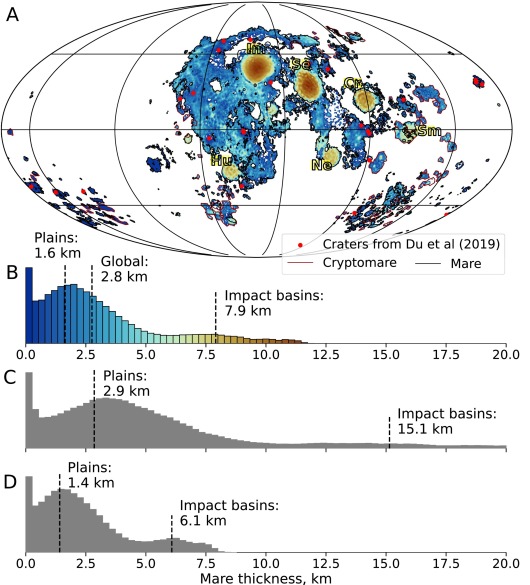
Mysterious Circles on Venus Suggest an Active Interior — and Provide Insights into Earth’s Early History
Venus, frequently referred to as Earth’s “twin” due to its comparable size and composition, may not be the lifeless planet we once believed it to be. Recent research released in Science Advances indicates that some of the planet’s extensive circular formations known as coronae are not merely the vestiges of a past epoch, but rather signs of ongoing geological activities that continue to shape the surface of Venus today.
By utilizing cutting-edge computational modeling and data from NASA’s Magellan spacecraft collected over decades, researchers have reexamined 75 of these puzzling structures, uncovering indications that Venus is geologically dynamic in its unique manner — despite the absence of the plate tectonics that characterize Earth’s geology.
What Are Coronae and Why Are They Significant?
Coronae (the plural of “corona”) are enormous ring-like formations, sometimes spanning hundreds of kilometers, located across the surface of Venus. These features, encircled by concentric fractures and ridges, imply significant geological forces at play beneath the planet’s exterior. For years, scientists have debated whether these formations are ancient or in a state of development. The recent study provides strong evidence that at least some coronae are still forming or undergoing changes beneath the surface.
Led by planetary scientist Gael Cascioli from the University of Maryland, Baltimore County, the research team utilized data on topography and gravity from Magellan — collected in the early 1990s — in conjunction with advanced 3D computer simulations to explore beneath the Venusian crust.
Their major discovery? Detecting signs of hot, buoyant mantle plumes — columns of heated rock ascending from deep within the mantle — underneath 52 of the 75 coronae examined. This strongly suggests ongoing geological activity, despite the lack of conventional plate tectonics. It may serve as our best analogy for comprehending Earth’s geology during its initial, pre-tectonic period.
Examining Below the Surface with Gravity
Magellan’s radar mapping of Venus was groundbreaking at its time, offering the first comprehensive topographic and gravity data for the planet. However, it was constrained by its low resolution, permitting detailed analysis only of the largest coronae.
Cascioli and the research team surmounted this limitation by integrating gravity anomalies — variations in gravitational attraction caused by underlying structures — with topographical features. The resulting analysis provides a clearer understanding of the internal dynamics that formed these structures.
“By merging gravity and topography data, this research has yielded a fresh and significant perspective into the possible subsurface processes currently influencing the surface of Venus,” remarked Cascioli.
Among the most evident indicators were gravity patterns hinting at active mantle upwelling, which could account for how the surface is being pushed and reshaped in the present day. This reinforces the notion that coronae are not merely static remnants of past events but dynamic forms that indicate plumes continuing to affect Venus’s geology.
A New Tectonic Framework for Venus
In contrast to Earth, which is mainly sculpted by plate tectonics — where massive crustal plates move, collide, and subduct — Venus seems to depend on a broader variety of internal processes. The study identified various types of plume-lithosphere interactions linked to different coronae, including:
– Radial Subduction: Hot mantle upwelling forces the surface outward, causing adjacent crust to slope downward.
– Lithospheric Dripping: Colder surface material becomes unstable and sinks into the underlying hotter mantle.
– Embedded Plumes: Ascending hot rocks reach the lithosphere without piercing through, accumulating pressure beneath.
– Underplated Plumes: Mantle materials gather beneath a thick, inflexible lithosphere, distorting the upper region.
These mechanisms imply that Venus may display a “proto-tectonic” environment: not plate tectonics as understood on Earth, but a variety of interactive mantle behaviors possibly reminiscent of the early Earth.
Anna Gülcher, a planetary scientist from the University of Bern and co-author of the study, highlighted the importance of this variability: “The most thrilling aspect of our study is that we can now assert there are likely various and ongoing active processes responsible for their formation.”
Focus on Noteworthy Coronae
Several coronae scrutinized in the study exemplify these diverse processes occurring. For example:
– Eithinoha Corona in Venus’s southern hemisphere displays a trench, rim, and flat floor indicative of crustal recycling driven by mantle upwelling.
– Javine and Otygen Coronae show similar characteristics suggesting active crustal flow.
– Pavlova and Aruru Coronae in the Eistla region may stem from hot plumes that are trapped below the surface, distorting the landscape above without fully breaking through.
Reassessing Old Data, Anticipating a New Era
The study illustrates the immense potential in revisiting archived spacecraft data through the lens of modern analytical techniques. Even though Magellan ceased its operations in 1994, its legacy datasets continue to produce breakthroughs — especially when combined with sophisticated modeling methods.
“This analysis demonstrates that we